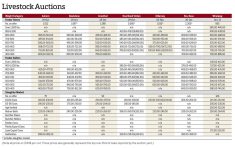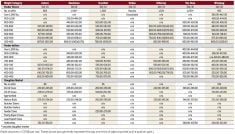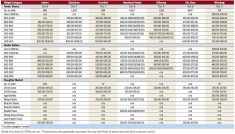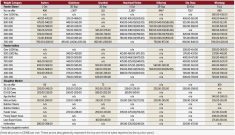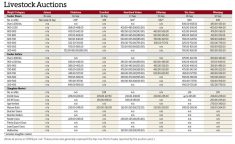Wintry weather and a growing lack of heavyweights have marked the beginning of a seasonal slowdown in cattle sales during the week ended Nov. 19.
Manitoba received two separate blasts of heavy snowfall: the first, on Nov. 10 to 12, brought more than 30 centimetres and gusting winds to southern parts of the province, while the second dumped more than 10 cm in northern and central Manitoba on Nov. 17. The wind and snow created treacherous driving conditions, which forced some cattle producers to stay home.
“We had 300 (cattle) that were booked in that backed off one week because the roads were awful,” said Killarney Auction Mart general manager Allan Munroe. “Trucking has been a little bit of a struggle for some of these guys this fall all along; it’s not starting to get better.”
Read Also
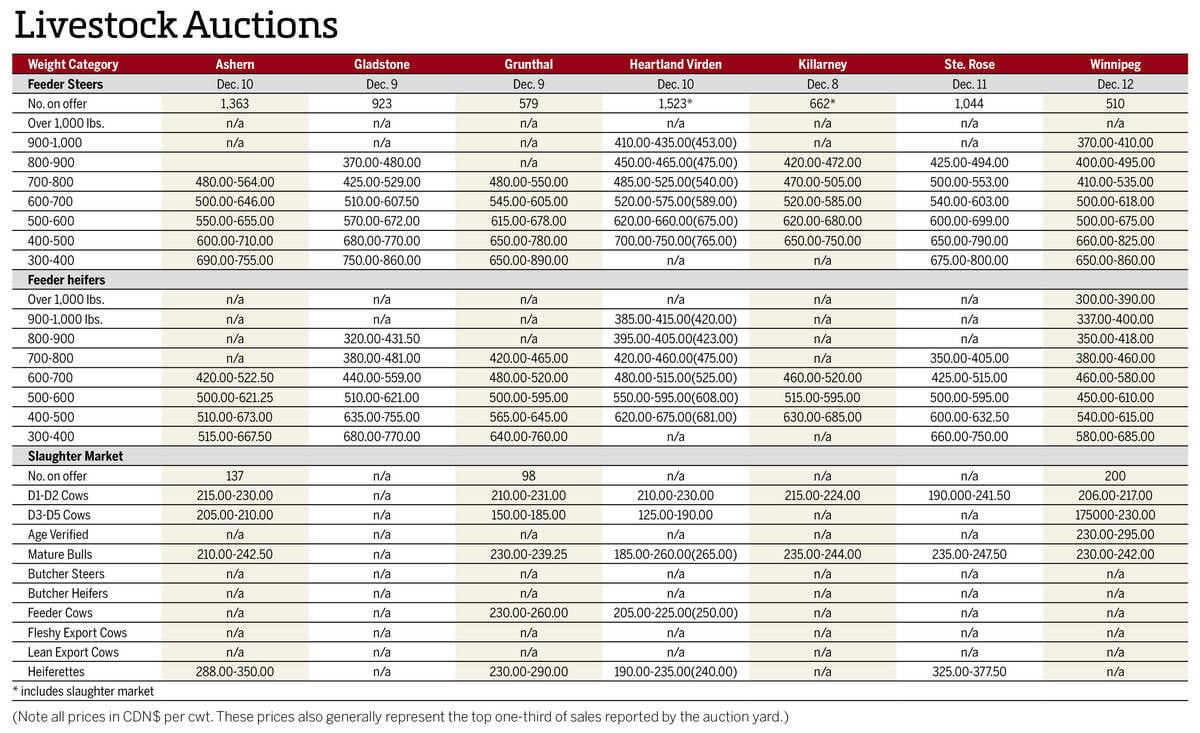
Manitoba cattle prices Dec. 16
Here’s what local farmers were getting paid last week for their cattle at Manitoba livestock auction marts; prices covering the week Dec. 8-12, 2025.
From Nov. 12 to 18, 9,765 cattle went through the rings at Manitoba cattle auction sites, a sharp decline from the 10,733 (excluding totals from Virden) that were on sale the previous week. Despite fewer cattle on the market, feeder prices softened. No heifers over 500 lbs., nor steers over 700 lbs., sold for over $200 per hundredweight.
“We’re a long ways into the fall run. The cows have sort of stabilized. They’re not getting any worse but they’re not great,” Munroe said. “The heifers saw a little more pressure this week than the steers. Some of the steers were a little softer too. There’s still good demand for the top-end calves from Ontario, but they’re getting way more selective.”
Munroe called the Ontario market a “saviour” during the year, offsetting some of the losses suffered by cattle producers in drought-stricken Western Canada.
“There are a lot more (cattle) going east this year than last year just for the fact they had a far better (grain) crop this year than a year ago. They seem to be a bit more current getting their fat cattle moved out than a year ago. Stronger demand than last year from Ontario.”
On the Chicago Mercantile Exchange, the December live cattle contract rose on Nov. 19 to US$133.675/cwt, its highest level since Sept. 2. The January feeder cattle contract traded at US$162.075/cwt on the same day, its highest point since Oct. 15. The Canadian dollar falling below 80 U.S. cents also supported cattle prices, but Munroe is bearish.
“It’s highly unlikely (prices) will get any stronger this time of year. If they stay steady, it’s a win,” he said.
The devastating floods in B.C.’s Lower Mainland are having similar effects on the region’s cattle producers. Farmers used various watercraft in an attempt to move frightened cattle into large trailers.
“When I see calves that are under water and they throw them in the boats to save them, on the one hand it breaks my heart,” Abbotsford Mayor Henry Braun told Reuters. “On the other hand, I’m just so impressed with our farming community coming together to help each other.”
Because of highways cut off by floods and mudslides, some dairy farmers in the affected regions of B.C. were forced to dispose of milk into manure pits until milk pickups could resume, according to reports.




